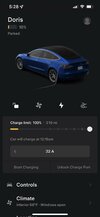AlanSubie4Life
Efficiency Obsessed Member
Would the routines @AlanSubie4Life recommends
I’m not sure exactly what you are referring to here. I don’t think there is a lot that you can do to recover capacity, though it is possible to nudge the estimate a bit, some of the time.





